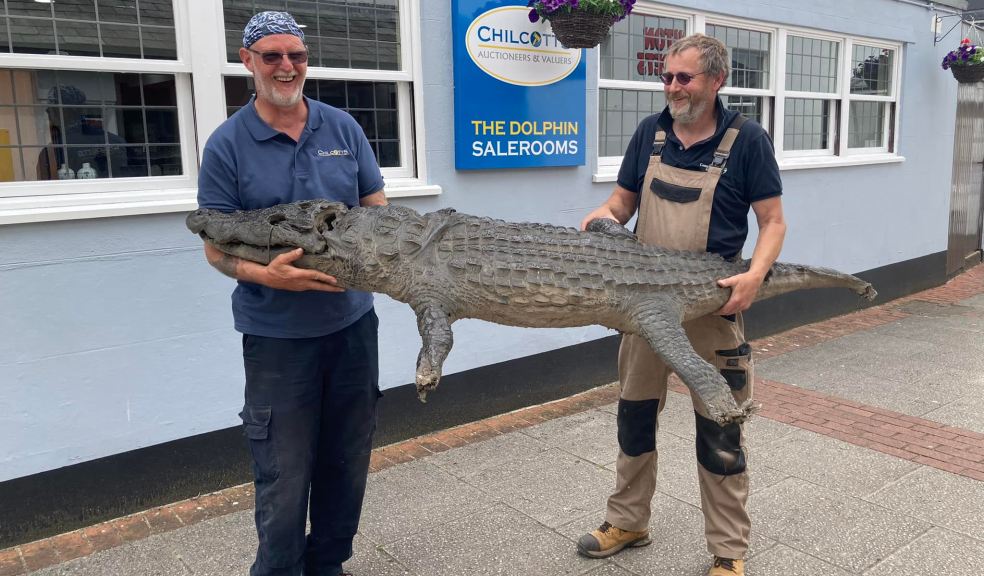
The sale of an American alligator that is “older than America itself”!
Most people driving from Honiton towards Sidmouth on the A3072 will have spotted the brown sign for historic house Sand – some may have even visited on one of the house’s open days.
The house, which has been in the Huyshe family since 1560 and has a wealth of history dating back to the Elizabethan era, is now being sold.
Chilcotts Auctioneers is selling a variety of fascinating items from the property including family portraits, a spectacular sideboard and an unusual long-term resident, a taxidermy alligator.
Auctioneer, Duncan Chilcott said: “It’s the first time that any of these items have left the house in many decades, if not centuries. It’s been fascinating peering into their history; they don’t all fit neatly into categories of antiques that we’re familiar with - especially not a certain reptile!”
Perhaps one of the more extraordinary items to arrive at Chilcotts’ saleroom in recent years, the taxidermy alligator has been nicknamed the ‘Sand Snapper’ by the auction team. The Huyshe family understands that it was sent back from America in the 17th century by their ancestors - two brothers, both Baptists, who fled to the New World in the 1650s to escape religious persecution. One of the vendors observed that it was an American alligator that was “older than America itself”! The creature had been mounted at the top of a panelled wall in the Elizabethan entrance passageway. This curiosity is difficult to value and has been estimated at between £200 and 300.
The sideboard is an enigma in itself; an earlier house was rebuilt in 1594 by Roland Huyshe who, it is believed, installed a grand fire surround featuring oak panels and carvings. The house was remodelled by one of his descendants in the mid-19th century. At this time, the family presume, the overmantel was dismantled and the parts used to make the impressive sideboard, which has stood at one end of the Tudor Great Hall ever since.
A unique piece, it includes finely carved oak figures wearing the finest fashions of the late 16th/early 17th centuries, some of the original wall panelling, plus a centrepiece of the Royal Stuart coat of arms. Although it is being sold as a whole the value is in the carved panels rather than the sideboard itself. It is expected to sell for between £1,500 and 2,000.
Three large family portraits are from the 19th century. One is of General Alfred Huyshe who served as a Brigade Major of Artillery in India during the Gwalior campaign 1843 to 1844 and commanded a Troop of Horse Artillery throughout the Punjab campaign of 1848 to 1849. Another is Alfred’s brother, Rev John Huyshe who was Rector of Clyst Hydon for 40 years and the third, John’s wife, Anne-Lydia Huyshe. These are estimated at between £150 and £300.
Duncan added: “Endearingly, the current Huyshe family are in the habit of calling the portraits by their first names, they are very much part of the family.”
As to the name, Sand? It is nothing to do with the beach at nearby Sidmouth, the name came from William de Sande, who bought the property from the Dean and Chapter of Exeter Cathedral in the middle of the 13th century.
The consignment from Sand will be included in the upcoming July 16 sale at Chilcotts’ Dolphin Saleroom in Honiton High Street.














